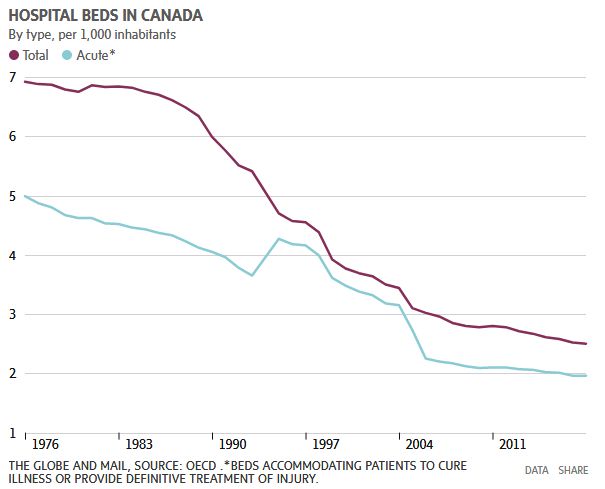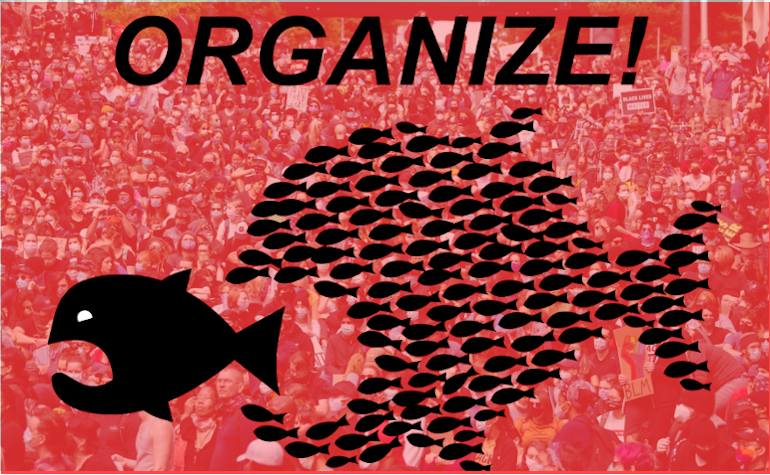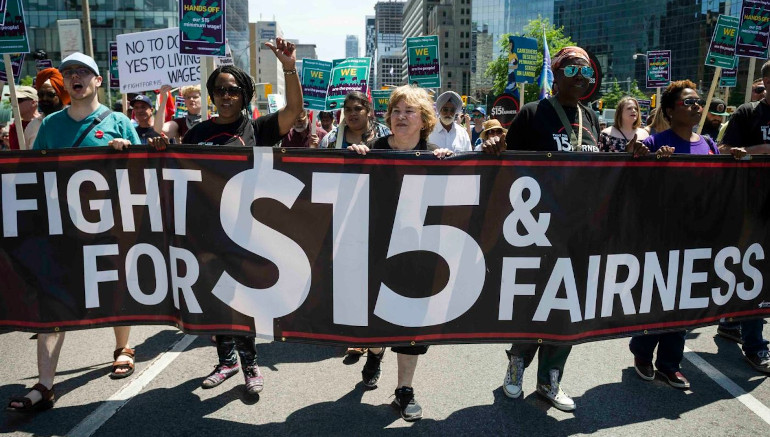As the Covid-19 pandemic continues to impact Canada, we see all levels of government taking increasingly desperate measures to avert the kind of catastrophe we are seeing unfold in Italy. On more than one occasion, officials have referred to past outbreaks, like SARS, to pat themselves on the back and talk about how much they’ve learned.
Let’s take examine these claims and take a hard look at the kind of lessons that should have been learned and the steps that should have been taken to prepare Canada for COVID-19.
First of all, COVID-19 is only the latest deadly mutation of the coronavirus to infect people globally. SARS (2002-03) and MERS (2012-14) were the others, with SARS hitting Canada in a significant way. These previous outbreaks led public health officials around the world to warn that another outbreak from a variant of the coronavirus was inevitable.
So, how did Canada prepare for the inevitable? Let’s think about how a socialist government, guided by, not just science, but the democratic input of workers, professionals and other citizens and focused on the health and well-being of people, rather than guaranteeing the privilege and profit of the 1%, would have prepared:
In advance of a pandemic, there would be a NATIONAL emergency plan prepared, not just for various levels of government, but also for unions, NGO’s, civic organizations, religious and service organizations, etc. Among other things, this plan would address:
- A national inventory of hospital beds, medical professionals, emergency supplies, and essential service workers, continually updated and maintained.
- Identifying medical supplies that would be needed and stockpiling sufficient quantities to support a surge in usage until production can be ramped up.
- Looking at the stresses that would be placed on the healthcare system by a pandemic and building in a certain level of surge capacity. Among other things, this means we need more members of the medical team from doctors to cleaners and more hospital beds than average use. A medical system constantly at close to or even over 100% capacity is a recipe for disaster.
- Plans for adapting buildings and facilities for emergency uses, like quarantine, treatment, temporary housing, etc.
- Investing in government research into anti-viral drugs and treatments. Even a modest investment in research after the SARS epidemic with 17 years of consistent funding would have yielded a toolkit that is desperately needed today.
- Developing plans for protecting and supporting workers in all fields who would be vital in a pandemic. This means making sure they have the equipment they need to work safely and effectively. It also means providing child care, meals, and adequate time off to prevent burnout.
- Coordinating and integrating our national plan with the emergency plans of other countries. A pandemic, by definition, strikes the entire human population and requires real international cooperation and support since a lethal pathogen doesn’t care about borders, nationality, skin colour, gender, religion, etc. It threatens every human being and we need to make our shared vulnerability into our shared strength by working together internationally in a pandemic crisis.
- Having some planning, coordinated at all levels of government, to support Canadians in a pandemic or mass quarantine scenario. If you know a pandemic is coming you shouldn’t have to figure out on the fly how you are going to keep your population from starving to death. Plans for financial and social support to people, including stockpiling non-perishable supplies in remote communities, need to be made in advance. Also needed is the identification and protection of vital infrastructure and supply channels, not from terrorism, but from deterioration due to lack of maintenance in the interests of shareholder value.
- While any plan is better than no plan, every plan has flaws when applied to the real world. In order to adapt a plan effectively and sensitively in a crisis situation, it needs to be constantly adjusted to fit an evolving situation. To see that this happens the plan should involve feedback from the community and decision-making involving representatives of all levels of the community, not just politicians and bureaucrats.
So, ask yourself, does this makes sense? Think about all the things you could add to a plan that actually treated our lives and well-being as something of value. Then ask yourself what have our capitalist leaders actually learned from SARS? Conservative and Liberal governments alike learned that big campaign contributions and cushy post-politics boardroom, lobbying and/or think-tank jobs depend on policies that systematically siphon the proceeds of Canadian’s labour into the pockets of the 1%, leading to the greatest disparity in wealth in the nation’s history. What they have most emphatically NOT learned is how to plan for a pandemic, and this has led to the pathetic and potentially deadly response to date.
Now, let’s examine the actual response. Keeping the outbreak contained requires understanding of who carries the disease. This has been difficult, due to a lack of COVID-19 tests, and an overloaded testing system. At-risk patients (healthcare workers, first responders, prison employees, etc.) are being given testing priority. While this keeps our most important workers available, the realities of asymptomatic carriers and community spread combine to create a situation where Canadians, unaware that they have the disease, continue spreading it.
The situation in hospitals remains ominous as well. Discussions of flattening the curve centre on avoiding a situation where healthcare workers must choose who does and doesn’t get a ventilator. Canada’s supply of ventilators is inadequate. A study in 2015 found there were around 15 per 100,000 people while Italy has 12.5 per 100,000 people and has been completely overwhelmed. As the outbreak progresses, and thousands of new cases pop up every day, a life-threatening log jam will force healthcare workers into difficult decisions. Acute hospital beds in Canada have been slashed. In 1976 there were 4.99 acute beds for every 1,000 people, in 2018 it was only 1.96, one of the lowest number for any OECD country. Canadian hospitals constantly run at near or even over capacity. Elective or “non-essential” procedures have been put on hold to free up some beds, but this won’t make up the gap between what can be offered and what will be required.
On March 18, the Federal Government announced their $82 billion economic response plan (increased to $107 billion on March 25). Most striking from the economic response plan is that $55 billion is a tax deferral for business. These capital injections into the economy are primarily aimed at staving off the looming economic recession/depression. The bulk of this money flows, not to small business, which is the actual backbone of the Canadian economy, but to big corporations and the banks. The S&P/TSX composite index has lost over a third of its value since Canada’s first COVID-19 case, and it’s becoming clear that the economy, which was already in trouble due to chronically low oil prices and corporate downsizing (the GM plant in Oshawa, etc.), could tank with the virus, and take the financial system, already overburdened with debt, right down the tubes.
The government’s slow response has also laid bare the implementation problems of our crumbling social welfare infrastructure. While funds have been made available, accessing them is proving frustrating for many. During the week beginning March 16, over 929,000 Canadians applied for employment insurance (EI), compared to 27,000 in the same week last year. It will likely be weeks until Canadians get EI. However, most unemployed Canadians do not get EI. Only 33% of women and 38% of men received it in 2018, according to a recent CCPA report. For people not eligible for EI, the government has launched an Emergency Response Benefit, which will not start until mid-April and the next rent payment is due on April 1. The payment is only $2,000 a month, not enough to pay rent in cities like Vancouver and Toronto. Given the hyperspeed time scale of an exponential virus outbreak, it is anyone’s guess what the country will look like at that time.
Everything the government is doing appears made up as this crisis unfolds. Most appallingly, when this article was written, we are five days away from the end of the March, and the Canadian Government still refuses to take any action to keep average working Canadians in their homes beyond pleas to the banks and landlords, both groups known for their warm and fuzzy hearts, to be compassionate. Every Canadian should be asking themselves just who this government really represents.
COVID-19 is a perfect example of how the 1% benefits from government-sponsored socialism during a crisis, while workers’ needs are secondary concerns. The most neglected, like our First Nations communities ($305 million, or 0.004% of total spending, has been allocated), or the drug users already dealing with the ongoing overdose public health crisis, remain basically so.
The immediate problems facing our healthcare system (hospital overcapacity, supply shortages, healthcare worker burnout) are not due merely to the immediate stresses of COVID-19. That the analysis of a government response to a public health crisis is as much about economics as it is about public health signals our desperate need for a long term pandemic preparation plan with the resources to put it into action. This is something at which capitalist governments around the world, including Canada’s, have been abject failures.




